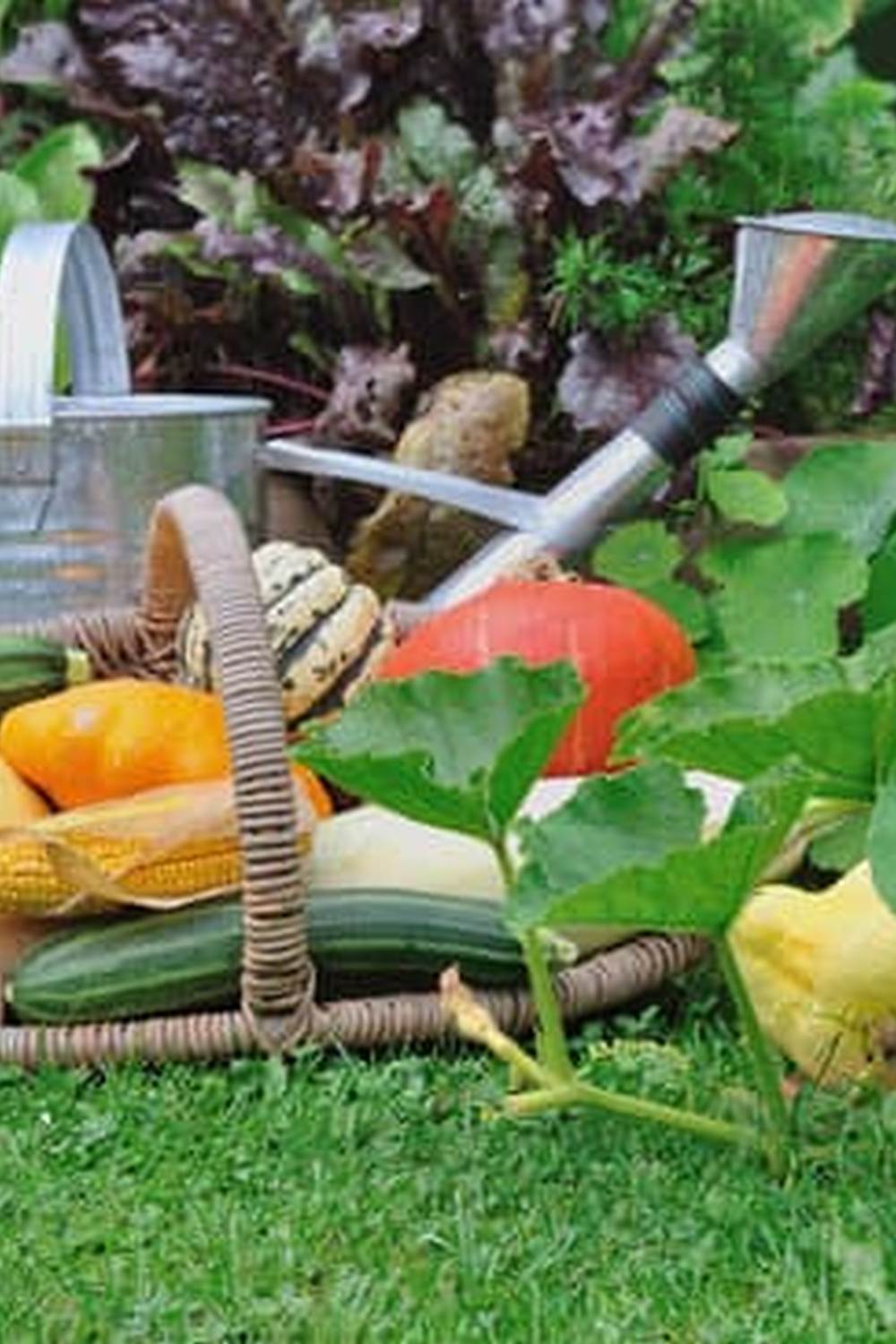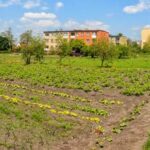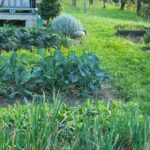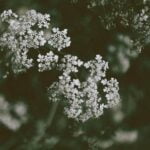Red mulch is a popular choice for gardeners looking to enhance the appearance of their vegetable beds while also providing benefits such as weed suppression and moisture retention. However, a debate persists regarding whether red mulch is truly safe for use in vegetable gardens. Many gardeners wonder, “is red mulch safe for vegetable gardens?” In this article, we will delve into the topic, exploring the potential risks and benefits associated with using red mulch in vegetable gardens.
Red mulch is typically made from materials like recycled plastic or rubber, dyed to achieve its vibrant red color. Its primary function is to aid in soil temperature regulation, prevent weeds from taking over garden beds, and improve moisture retention for plants. Furthermore, some proponents argue that red mulch can actually enhance the growth of vegetables by reflecting certain wavelengths of light back onto the plants.
Despite its advantages, there are concerns about the safety of red mulch in vegetable gardens. Some worry about chemicals leaching into the soil from the dyed materials used in manufacturing red mulch. As we explore the benefits and potential risks of using red mulch in vegetable gardens, it’s essential for gardeners to weigh these factors carefully before incorporating this material into their gardening practices.
Benefits of Red Mulch
Red mulch is a popular choice for gardeners looking to enhance the growth of their vegetables. One of the key benefits of using red mulch in garden beds is its ability to regulate soil temperature. The color red absorbs less heat compared to black plastic mulch, making it ideal for areas with hot climates.
This helps prevent overheating of the soil, which can negatively impact the growth of vegetable plants. Additionally, red mulch retains moisture in the soil, reducing the need for frequent watering and helping plants thrive even during dry periods.
Another advantage of red mulch is its ability to deter pests from infesting vegetable gardens. The reflective properties of red mulch confuse insects that are attracted to certain colors, such as whiteflies and aphids.
By using red mulch in your vegetable garden, you can potentially reduce the risk of insect damage to your crops without relying on harmful chemicals or pesticides. This natural pest control method is not only eco-friendly but also contributes to a healthier and more bountiful harvest.
Furthermore, red mulch can improve the overall appearance of your vegetable garden by providing a vibrant contrast to green foliage. The color contrast created by red mulch can make your plants stand out and create visual interest in your garden space.
Additionally, red mulch is often made from organic materials such as recycled wood or rubber, making it an environmentally friendly option for gardeners who are conscious of sustainability. When choosing red mulch for your vegetable garden, opt for organic options that are free from harmful chemicals to ensure the safety and health of your plants.
| Benefits | Details |
|---|---|
| Regulates Soil Temperature | Reduces heat absorption, prevents soil overheating |
| Natural Pest Control | Deters pests without chemicals, reduces insect damage |
| Enhances Aesthetic Appeal | Creates color contrast, improves visual interest in garden space |
Potential Risks of Red Mulch
Red mulch is a popular choice for gardeners looking to enhance the growth of their vegetables while also adding a pop of color to their garden beds. However, there has been an ongoing debate about whether red mulch is safe for vegetable gardens. One of the main concerns raised by gardeners is the potential risks associated with using red mulch in their vegetable patches.
One of the primary concerns regarding the safety of red mulch for vegetable gardens is the possibility of chemicals leaching into the soil. Some red mulch products contain dyes and additives that may release harmful compounds as they break down over time. These chemicals could potentially be absorbed by the vegetables growing in the garden bed, leading to contamination and health risks for those consuming the produce.
To alleviate these concerns, it is essential for gardeners to carefully read product labels and choose red mulch made from natural materials that do not contain harmful chemicals. Opting for organic red mulch or alternatives such as shredded leaves or grass clippings can help reduce the risk of chemical leaching into the soil and ensure a safer environment for growing vegetables.
By selecting safe red mulch options and properly maintaining garden beds, gardeners can enjoy the benefits of using red mulch without compromising the health of their vegetable crops.
| Commonly Used Materials in Red Mulch | Potential Impact on Safety |
|---|---|
| Plastic | Can release harmful chemicals into soil over time |
| Rubber | May contain toxins that can leach into plants |
| Natural Wood Chips | Safer option that decomposes naturally without harmful additives |
Commonly Used Materials in Red Mulch
When considering whether red mulch is safe for vegetable gardens, it is important to take into account the materials used in its production. Commonly used materials in red mulch can vary and have different implications for the health of your garden.
One common material found in red mulch is dyed wood chips or shredded bark. While these may be aesthetically pleasing, there are concerns about the chemicals used in the dyeing process potentially leaching into the soil and affecting plant growth.
Another material often used in red mulch is recycled rubber or plastic. These materials provide durability and are long-lasting, but there are worries about potential toxins being released into the soil over time. Gardeners should also be cautious when using recycled materials as contaminants from previous use might remain in them, posing a risk to vegetable plants.
In addition to dyed wood chips and recycled materials, some red mulches are made from organic matter like straw or grass clippings. These options are generally considered safer for vegetable gardens as they decompose naturally without introducing harmful chemicals.
However, it is essential to ensure that any organic red mulch used is free from pesticides or herbicides that could harm your crops. By understanding the various materials commonly used in red mulch, gardeners can make informed decisions about which type is best suited for their vegetable gardens while prioritizing safety.
How to Choose Safe Red Mulch
Red mulch can be a great addition to vegetable gardens, providing numerous benefits such as retaining soil moisture, preventing weed growth, and enhancing the overall appearance of garden beds. However, there are concerns about the safety of red mulch for vegetable gardens, particularly in terms of potential chemical leaching into the soil. So, how can you ensure that the red mulch you choose is safe for your vegetables?
Here are some tips on how to select safe red mulch for your vegetable gardens:
- Look for organic red mulch options: Organic red mulch is made from natural materials like plant-based compost or bark, which are less likely to contain harmful chemicals. These options are typically safer for vegetable gardens.
- Check for certifications: Look for red mulch products that are certified by reputable organizations such as the Mulch & Soil Council or the Organic Materials Review Institute (OMRI). These certifications indicate that the product meets certain safety and quality standards.
- Avoid colored mulches with synthetic dyes: Some red mulches are colored using synthetic dyes that may contain chemicals harmful to plants and soil. Opt for natural alternatives or those colored with safer, plant-based dyes.
In addition to selecting safe red mulch options, consider exploring alternatives to traditional red mulches if you have concerns about their safety. For example, you could use compost, straw, or grass clippings as natural mulching materials in your vegetable garden.
These alternatives not only provide similar benefits to red mulch but also reduce the risk of potential chemical exposure in your garden. By being mindful of the materials used in your red mulch and opting for safer alternatives when necessary, you can ensure a healthy and thriving vegetable garden environment.
Studies on the Safety of Red Mulch
Current Research Findings
There have been various studies conducted to determine if red mulch is safe for vegetable gardens. One study published in the Journal of Environmental Science and Health found that certain types of red mulch contain chemicals that may leach into the soil over time.
These chemicals can potentially harm plant growth and even pose risks to human health. Another study from a university research team suggested that red mulch made from recycled tires could release toxic compounds into the soil, affecting the quality and safety of vegetables grown in those conditions.
Implications for Gardeners
The findings from these studies highlight the importance of being cautious when using red mulch in vegetable gardens. Gardeners should be aware of the materials used in their choice of red mulch and consider potential risks associated with those materials. It is crucial to prioritize safety when selecting mulch for garden beds, as the health of both plants and individuals consuming the vegetables grown can be at stake.
Recommendations for Future Research
As concerns about the safety of red mulch for vegetable gardens continue to grow, further research is needed to assess its long-term effects on soil quality and plant development. Future studies could focus on analyzing different types of red mulch materials and their impact on crop yields, as well as investigating alternative options that are safer for use in organic gardening practices.
By expanding the knowledge base on this topic, gardeners can make informed decisions to minimize potential risks while still reaping the benefits of using mulch in their vegetable gardens.
Best Practices for Using Red Mulch in Vegetable Gardens
Using red mulch in vegetable gardens can be a beneficial practice, but it is crucial to follow best practices to ensure the safety of your plants and the environment. Here are some guidelines to help you make the most out of red mulch in your garden beds:
- Choose natural and organic red mulch options: Opt for red mulch made from natural materials such as pine bark or straw. These organic options are less likely to contain harmful chemicals that can leach into the soil and affect plant growth.
- Properly prepare the soil before applying red mulch: Make sure to cultivate the soil, remove weeds, and add compost or fertilizer as needed before laying down red mulch. This will create a healthy growing environment for your vegetables.
- Apply red mulch at the right time: Wait until after your vegetables have established themselves in the garden before adding red mulch. This will prevent any potential interference with seed germination or young plant growth.
In addition, it is important to monitor the condition of your red mulch throughout the growing season. Replace any worn-out or compacted mulch to maintain its effectiveness in conserving moisture, preventing weed growth, and regulating soil temperature.
Ultimately, using red mulch in vegetable gardens can be a safe and effective way to promote plant growth and improve overall garden health when proper practices are followed. By being mindful of the type of red mulch you use, preparing your garden beds adequately, and staying on top of maintenance, you can enjoy the benefits of this colorful garden accessory without compromising the well-being of your vegetables.
Conclusion
In conclusion, the debate on whether red mulch is safe for vegetable gardens continues to raise concerns among gardeners. While red mulch offers benefits such as weed suppression, moisture retention, and enhanced vegetable growth, there are also potential risks associated with its use. The main concern revolves around the chemicals present in red mulch that may leach into the soil and impact the health of plants or individuals consuming the vegetables grown.
When considering using red mulch in a vegetable garden, it is crucial to prioritize safety by choosing materials that are free from harmful chemicals. Opting for organic or natural alternatives to traditional red mulch options can help minimize any risks involved. Additionally, staying informed about recent studies or research on the safety of red mulch can provide valuable insights for making informed decisions about its use in the garden.
Overall, while red mulch can offer aesthetic appeal and practical benefits for vegetable gardens, caution should be exercised when selecting and using this type of mulch. By following best practices for installation and maintenance, as well as keeping abreast of any new developments regarding the safety of red mulch, gardeners can ensure a healthy and thriving environment for their vegetables to flourish.
Ultimately, the choice to use red mulch in a vegetable garden should prioritize the well-being of both the plants and those who will consume them.
Frequently Asked Questions
Is Red Wood Mulch Safe for Vegetable Gardens?
Red wood mulch can be safe for vegetable gardens as long as it is made from natural materials without any harmful chemicals or toxins. It can help retain moisture, suppress weeds, and regulate soil temperature.
Is Colored Mulch Safe for Vegetable Gardens?
Colored mulch, including red mulch, can be safe for vegetable gardens if it is made from non-toxic materials. However, some colored mulches may contain dyes or chemicals that could potentially leach into the soil and harm the vegetables.
What Is the Disadvantage of Red Mulch?
One disadvantage of red mulch is that it may fade over time due to exposure to sunlight and weather conditions. This can affect its aesthetic appeal in the garden. Additionally, if the red mulch contains harmful chemicals or toxins, it could potentially harm the soil and plants.

If you’re looking to get into vegetable gardening, or are just looking for some tips on how to make your current garden better, then you’ve come to the right place! My name is Ethel and I have been gardening for years. In this blog, I’m going to share with you some of my best tips on how to create a successful vegetable garden.





